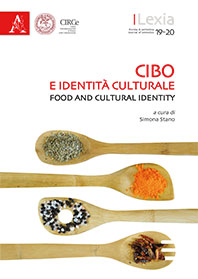Estratto da
LEXIA. RIVISTA DI SEMIOTICA
Cibo e identità culturale | Food and Cultural Identity
De l’émotion gustative à la forme de vie. Le parcours identitaire d’une marque de restauration rapide
LEXIA. RIVISTA DI SEMIOTICA
Cibo e identità culturale | Food and Cultural Identity
De l’émotion gustative à la forme de vie. Le parcours identitaire d’une marque de restauration rapide

ENGLISH TITLE: From the gustative emotion to the form of life. The identity quest of a fast–food brand
ABSTRACT: Since the 1990s, semiotics adopted new analytical models which today enable to study a wide variety of cultural realities: texts, objects, practices, identities… Unfortunately, only a few case studies tried to establish a dialogue between those models, even though we can consider them as compatibles. Thus, the aim of this work is to test those semiotic tools by analysing the brand equity of a fast–food restaurant: studying first the brand discourses and the practices into which they fit and, finally, reporting on the ideology—the ethics values — which brand identity of the restaurant is founded on. More generally, our observations will lead us to explain what a brand is from a sociosemiotic approach, to clarify the relation between brand and form of life and, above all, to rethink the articulation of the niveaux d’immanence du plan de l’expression proposed by Fontanille. In this article, we will make use of Rastier’s sémantique interpretative, Fontanille’s sémiotique des pratiques and Landowski’s sociosémiotique.
KEYWORDS: branding; cultural studies; form of life; semiotics; values.
ABSTRACT: Since the 1990s, semiotics adopted new analytical models which today enable to study a wide variety of cultural realities: texts, objects, practices, identities… Unfortunately, only a few case studies tried to establish a dialogue between those models, even though we can consider them as compatibles. Thus, the aim of this work is to test those semiotic tools by analysing the brand equity of a fast–food restaurant: studying first the brand discourses and the practices into which they fit and, finally, reporting on the ideology—the ethics values — which brand identity of the restaurant is founded on. More generally, our observations will lead us to explain what a brand is from a sociosemiotic approach, to clarify the relation between brand and form of life and, above all, to rethink the articulation of the niveaux d’immanence du plan de l’expression proposed by Fontanille. In this article, we will make use of Rastier’s sémantique interpretative, Fontanille’s sémiotique des pratiques and Landowski’s sociosémiotique.
KEYWORDS: branding; cultural studies; form of life; semiotics; values.
| pagine: | 213-229 |
| DOI: | 10.4399/978885488571414 |
| data pubblicazione: | Giugno 2015 |
| editore: | Aracne |








